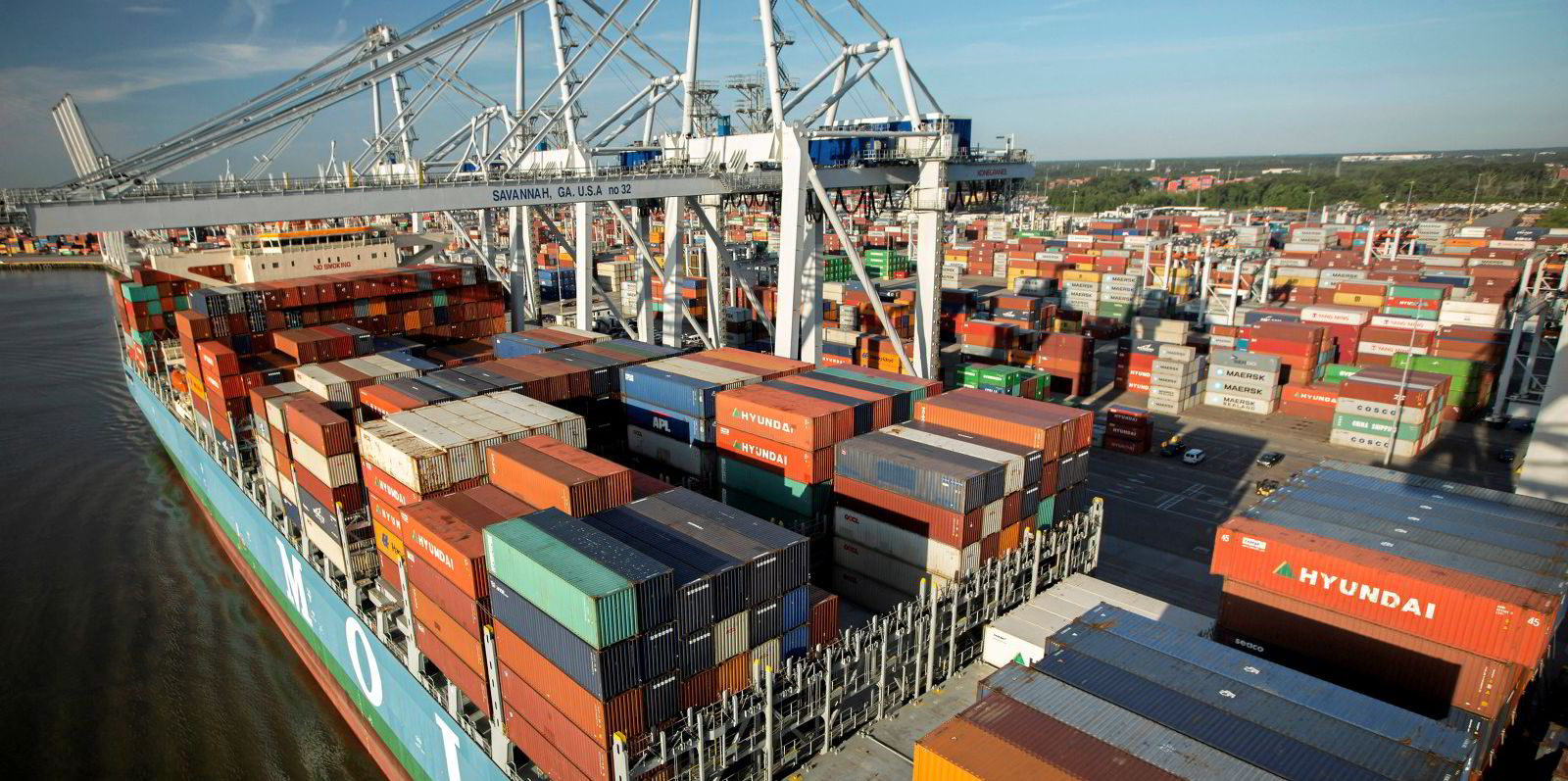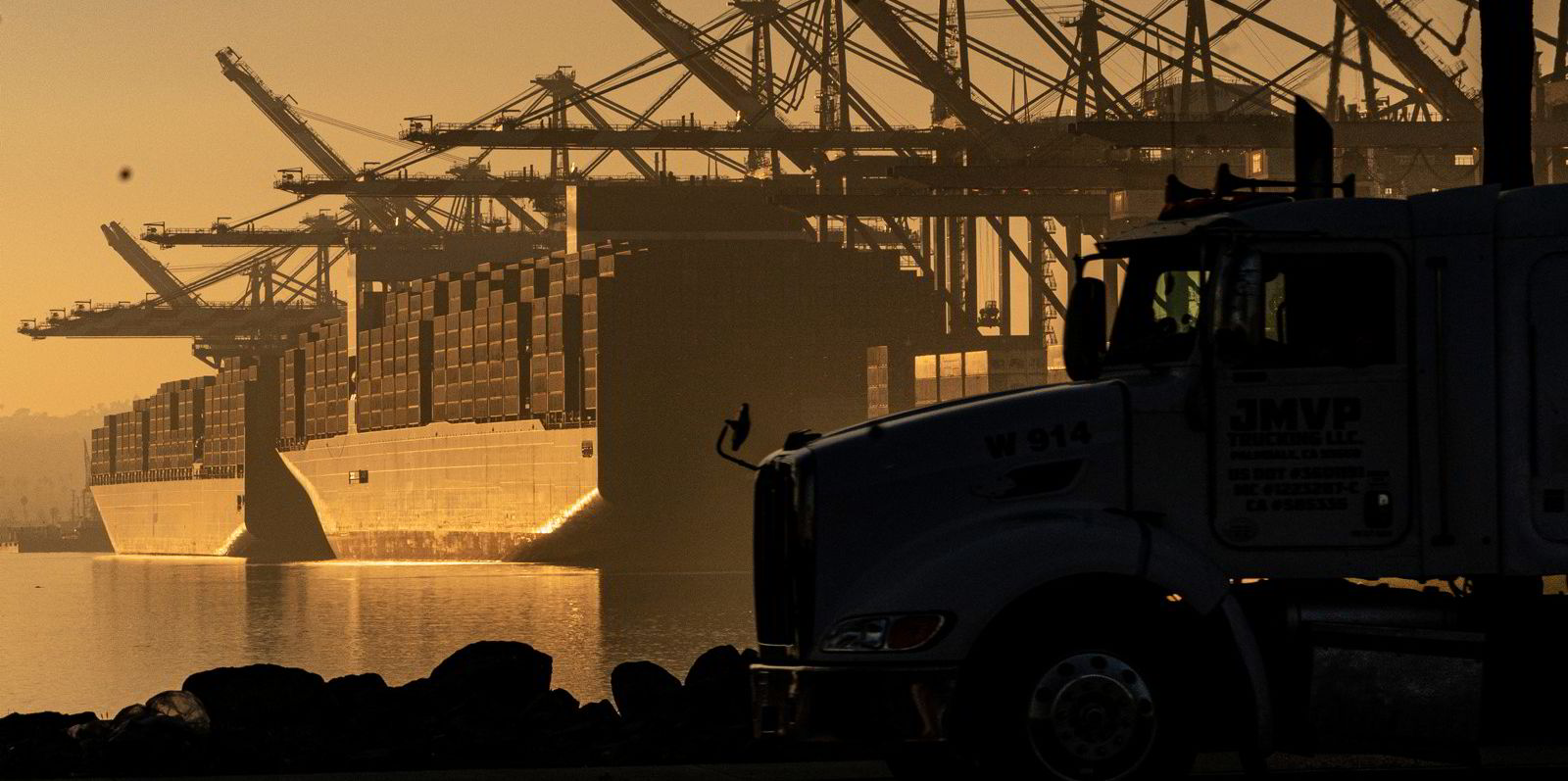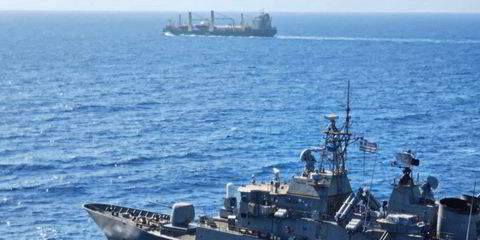A new study has revealed just how far behind the container shipping fleet is in the battle to comply with pending carbon reduction measures coming next year.
Three-quarters of the boxship fleet will not comply with the Energy Efficiency Existing Ship Index (EEXI) regulation to be introduced on 1 January 2023.
More than half would fail to meet the Carbon Intensity Indicator (CII) measure.
Those are the key findings of a study by UK analyst Maritime Strategies International (MSI) on the impact of the International Maritime Organization’s proposed environmental legislation.
The study suggests that two-thirds of the container ship fleet needs to act to comply with the EEXI.
EEXI is an assessment of a vessel’s theoretical efficiency and most container vessels of up to five years old and a significant number of those up to 10 years old will need to meet the required thresholds.
However, a far smaller proportion of older ships meet the requirement, MSI warns.
It estimates that more than half would fit into the lower bands (D and E) of the CII’s CO2 emission rating.
Not too onerous
The good news for shipowners is that technical modifications required by an overwhelming proportion of the fleet to comply with the regulation are “unlikely to be too onerous”, MSI believes.
Shipowners are expected to opt for engine power limitation (EPL) or shaft power limitation (ShaPoLi) to meet compliance.
“When suitable, installation of these devices can be mechanical or electronic, depending on the engine.
“It is understood to be a cost-effective, quick, and unobtrusive process that should not impede a vessel’s usual maintenance schedule and, therefore, will not absorb tonnage for the installation process over the coming months,” according to the analyst.

The problem could arise should EPL limit the extent to which vessels are able to speed up to compensate for delays.
That could be disruptive to schedules and lead to higher port congestion.
Engine minimum power restrictions, below which they are not allowed to drop due to safety regulations, may impact operations of older container ships.
That could support scrapping of older tonnage and may even encourage scrapping of younger, non-eco vessels.
“It could reduce their competitiveness and, therefore, the economic life of these ships,” MSI noted.
Half of container ships in CII bands D&E
The CII is an efficiency rating assigned to ships based on the grams of CO2 emitted per capacity-mile.
For container ships, the calculation is based on the Annual Efficiency Ratio (AER), which uses the parameters of fuel consumption, distance travelled and cargo-carrying capacity.
The first CII will be based on 2023 data due no later than 31 March 2024.
Under current operational parameters, only half of the container ship fleet will meet their CII requirements in 2023, according to MSI. The share of CII-compliant vessels in the fleet drops closer to one-third by 2026.
Under CII, ships will be given an operational carbon intensity rating from A to E.
Presently, half of container ships would be in the lower D and E rating, said MSI.
Ships that achieve a D rating for three consecutive years or an E rating in a single year are obliged to have approved a corrective action plan.
Slow down vessels
The “relatively poor” performance of container shipping may be skewed by the operational realities of the liner trade.
That stems from the extraordinary conditions that characterised the market in recent years.
The Covid-19 pandemic and port congestion exerted an oversized impact on the market “and will have undoubtedly undermined vessels’ CII performance”, according to the study.
Increased time in port negatively impacts CII scores given the emissions of auxiliary engines.
The average speed of the container ship fleet has also increased in the container market boom, particularly during long-distance voyages.
But vessels are likely to slow down as the market normalises and regulatory compliance comes to the fore, MSI argues.
“Slowing down the fleet presents an obvious potential solution to achieving greater levels of CII compliance at an aggregate level, especially given the size of the container ship orderbook.”
It was unlikely that operators that spend a disproportionately large amount of their in-service time at port will be able to achieve CII compliance through operational measures alone, MSI added.
“This makes the necessity to forward plan all the more urgent,” it noted.
The IMO’s Marine Environment Protection Committee (MEPC) adopted the technical guidelines for the EEXI and CII at its 78th session in June.







